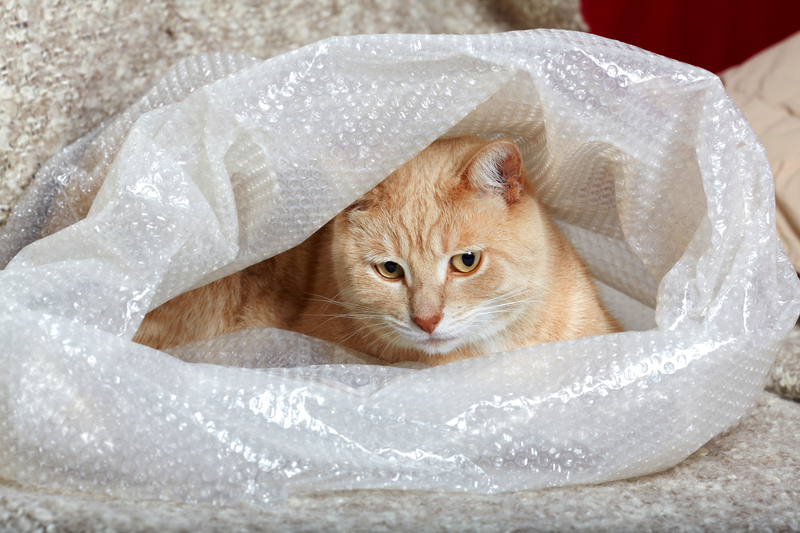A Sofa Survival Guide: Expert Storage Tips for Lasting Quality
Posted on 18/05/2025
A Sofa Survival Guide: Expert Storage Tips for Lasting Quality
Your sofa is more than just a piece of furniture--it is the centerpiece of comfort, style, and hospitality in your living space. Whether you're embarking on a home renovation, moving, or simply looking to preserve your prized sofa for years to come, proper storage is essential for maintaining both its beauty and function. In this comprehensive sofa storage guide, we reveal expert tips and tricks to ensure your couch stays in perfect condition and offers lasting quality, no matter how long it's out of use.

Why Proper Sofa Storage Matters
Your couch or sofa is often a significant investment, both financially and emotionally. Over time, improper storage can lead to a range of issues, including:
- Mold and mildew growth
- Damage from pests
- Fabric fading or discoloration
- Structural damage to frames and supports
- Unpleasant odors and stains
To ensure your sofa's longevity and maintain its value, follow these expert-backed steps for effective, long-term couch storage solutions.
Step 1: Prepare Your Sofa for Storage
1. Thorough Cleaning Before Storage
Begin your sofa preservation journey with a thorough cleaning. This eliminates dust, bacteria, allergens, and any food particles that can attract pests during storage.
- Vacuum: Use an upholstery vacuum cleaner or attachment to remove loose dirt from every crevice, including under cushions and along seams.
- Spot Clean: For stains or marks, use a fabric-appropriate cleaning solution. For leather sofas, opt for special leather cleaners and conditioners.
- Deodorize: Sprinkle a small amount of baking soda to neutralize odors, then vacuum again after letting it sit for a few minutes.
Tip: Always allow your sofa to dry completely before you begin packing and storing to avoid mold or mildew.
2. Disassemble Your Sofa (If Possible)
To make moving and storing easier--especially with bulky sectionals--disassemble your sofa into manageable pieces. Remove legs, armrests, cushions, and any detachable parts as per the manufacturer's instructions.
- Label each part and store screws and bolts in a sealable plastic bag taped to the frame for easy reassembly.
- Separate and wrap detachable parts individually for added protection.
Step 2: How to Properly Wrap a Sofa for Storage
1. Choose the Right Wrapping Materials
- Furniture blankets or pads: Soft but thick enough to prevent scratches and bumps.
- Plastic wrap or shrink wrap: Can be used in moderation, but shouldn't touch fabrics directly due to potential moisture buildup.
- Bubble wrap: Ideal for legs or fragile components.
- Stretch wrap: Secures blankets in place.
2. Wrapping Step by Step
- Start with a dust cover: For added protection, use a breathable dust cover or a cotton sheet over the upholstery.
- Layer furniture padding: Place furniture blankets or moving pads over all sides, covering corners well.
- Protect corners and legs: Add extra bubble wrap or foam corners where damage risk is higher.
- Secure everything in place: Use stretch wrap or packing tape (applied only to blankets, never the sofa fabric!) to keep it all tight and secure.
Wrapping your sofa carefully ensures continued color vibrancy, prevents accidental tears, and keeps pests at bay during storage.
Step 3: Selecting the Optimal Storage Environment
1. Why Climate-Controlled Storage Units Are Best for Sofas
The single most critical factor for long-term couch storage is choosing the right environment.
- Temperature: Fluctuating or extreme temperatures can warp wooden frames and damage glue or adhesives.
- Humidity: High humidity leads to mold, mildew, and unpleasant odors, while dry environments can cause cracking in leather and wood.
Opt for a climate-controlled storage unit whenever possible. These units maintain a steady temperature and balanced humidity levels, mimicking the comfort of your own living room to prolong your sofa's lifespan.
2. What to Avoid in Storage Spaces
- Uninsulated garages and sheds, which can attract rodents and insects
- Direct sunlight exposure, leading to fading and deterioration
- Areas with water leaks or poor air flow, which breed mold and mildew
Step 4: Positioning Your Sofa in Storage
1. Elevate the Couch Off the Ground
Place wooden pallets, plastic risers, or bricks on the floor before positioning your sofa in the storage unit. This prevents moisture from seeping up from the floor and also deters pests.
- Never store your sofa directly on concrete for prolonged periods.
- Cover the ground area with a tarp or plastic sheeting for extra protection, but maintain airflow to prevent condensation build-up underneath.
2. Avoid Stacking Heavy Items on Top
Your sofa's structure, especially cushions and upholsteries, can be permanently damaged by heavy objects placed on it. Store light items only, if absolutely necessary, and never stack anything on leather sofas to avoid indentations.
3. Leave Space for Air Circulation
Position the sofa a few inches away from the unit walls. This improves ventilation and reduces the chance of moisture becoming trapped against the fabric or wood, which helps in maintaining sofa quality during storage.
- For multiple pieces or sectional sofas, avoid compressing them together--leave breathing space!
Step 5: Protect Against Common Storage Hazards
1. Defend Against Pests and Rodents
- Use pest repellent sachets or non-toxic traps in corners of the unit (not directly on the furniture).
- Inspect storage spaces monthly for droppings or gnaw marks.
- Avoid storing food or organic materials nearby that attract pests.
2. Control Moisture and Odors
- Place silica gel packs or moisture-absorbing charcoal bags beneath and around your sofa.
- Check periodically for condensation or musty odor and adjust air flow if needed.
- Consider a small, battery-powered dehumidifier in areas of persistent dampness.
Special Considerations for Storage of Different Sofa Types
Storing Leather Sofas
- Apply a leather conditioner before wrapping to maintain softness and prevent cracking.
- Avoid plastic wrap touching the leather; use only cotton or breathable fabric covers.
- Keep away from direct sunlight, which accelerates drying and fading of leather.
Storing Fabric Sofas
- Use dust-mite resistant fabric covers for added protection.
- Spot clean and fully dry before wrapping and storing.
- Watch for color transfer from dyed blankets or covers; opt for neutral or white padding.
Storing Sectional and Reclining Sofas
- Disassemble carefully and label all parts and hardware.
- Remove and store mechanical components separately when possible, especially for recliners.
- Wrap each section individually for optimal protection.
Long-Term vs Short-Term Sofa Storage
Short-term sofa storage--anything up to a few months--requires basic cleaning, dust cover wrapping, and dry, secure accommodations. For long-term sofa preservation, such as several months to years, climate control and frequent checks are essential.
- Inspect your sofa every 1-2 months for new stains or pest activity.
- Adjust climate settings if necessary (especially through seasonal changes).
Expert-Recommended Do's and Don'ts for Sofa Storage
- Do store sofas in climate-controlled units for best sofa conservation results.
- Do elevate sofas off the ground, and give them space from walls and other objects.
- Don't use only plastic to wrap fabric-covered sofas; this can trap condensation.
- Don't store a sofa while it is damp or unclean--always wait until every part is fully dry.
- Do consider getting sofa insurance for high-value or antique pieces during extended storage.
- Don't rush the packing process. Take time to disassemble and wrap properly

How to Restore Your Sofa After Storage
Once you're ready to bring your sofa back into the spotlight, it just takes a few steps to refresh and restore it:
- Carefully unwrap and inspect: Remove all coverings and check for any signs of moisture or pests.
- Clean and air out: Wipe surfaces with gentle cleaners and use a vacuum to remove dust.
- Puff up cushions: Fluff and reshape cushions to restore loft and comfort.
- Reassemble disassembled parts: Use your labeled hardware baggies for easy reassembly.
Give your sofa a day to breathe and adjust to its indoor environment before heavy use or adding decorative pillows and throws.
Conclusion: Enjoy Years of Comfort With Proper Sofa Storage
A little effort goes a long way in ensuring your sofa remains a comfortable, attractive, and functional centerpiece in your home for years to come. By following these expert care and storage tips--from thorough cleaning and careful wrapping to choosing the ideal storage unit--your investment will stand the test of time and countless movie nights.
Remember, sofa longevity is in your hands! Proper storage is an art and a science, safeguarding both your furniture and your peace of mind.
For more advice and expert furniture storage tips, or if you're searching for the best climate-controlled storage facilities near you, consider consulting local furniture care professionals or your storage provider.
Store it right, and your sofa will thank you with years of enduring comfort, style, and support.



